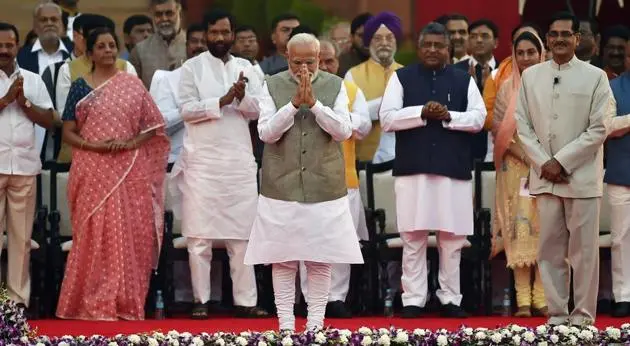On Saturday, August 24, the Union Cabinet greenlit the Unified Pension Scheme (UPS), a significant reform aimed at ensuring a fixed pension for government employees post-retirement. This new scheme is set to be implemented from April 1, 2025, addressing the long-standing demand for overhauling the existing National Pension Scheme (NPS).
Key Decisions and Official Announcements
During a press briefing on the Cabinet’s decisions, Information & Broadcasting Minister Ashwini Vaishnaw stated, “There have been persistent calls from government employees for reforms in the New Pension Scheme (NPS)… Prime Minister Narendra Modi established a committee in April 2023, led by T.V. Somanathan, the then Finance Secretary. Following comprehensive consultations, including discussions with the Joint Consultative Machinery (JCM), the committee has put forth the Unified Pension Scheme. Today, the Union Cabinet has granted its approval to this scheme.”
Understanding the Unified Pension Scheme
The Unified Pension Scheme is the latest initiative designed specifically for government employees. Unlike the NPS, the UPS ensures a fixed, assured pension amount.
The UPS is built on five fundamental pillars:
- Assured Pension: The scheme guarantees a fixed pension amounting to 50% of the average basic pay over the last 12 months before retirement, provided the employee has completed a minimum of 25 years of service. For those with lesser service tenure, the pension will be proportionately adjusted, with a minimum qualifying period of 10 years.
- Assured Family Pension: In the unfortunate event of the employee’s demise, the scheme promises an assured family pension, which is 60% of the employee’s basic pay, payable immediately.
- Assured Minimum Pension: For employees retiring after at least 10 years of service, the scheme provides for a minimum assured pension of Rs 10,000 per month.
- Inflation Indexation: The UPS includes an inflation indexation benefit, which applies to the assured pension, family pension, and minimum pension, ensuring that the pension keeps pace with rising living costs.
- Gratuity: At the time of retirement, the scheme provides a lump-sum gratuity payment in addition to the assured pension. This gratuity is calculated as one-tenth of the monthly emoluments (basic pay plus dearness allowance) for every six months of service completed. This payment does not reduce the assured pension amount.
Eligibility for UPS
Ashwini Vaishnaw clarified that central government employees could choose to remain in the NPS or opt for the new UPS. Cabinet Secretary Designate T.V. Somanathan further elaborated, stating, “This scheme will also extend to those who retired under the NPS from its inception in 2004 onward. Though the UPS becomes effective from April 1, 2025, it will apply retroactively to all those who have retired under the NPS, including those retiring by March 31, 2025. These retirees will receive arrears after adjusting any amounts already withdrawn.”
What is the National Pension System (NPS)?
The National Pension Scheme (NPS), introduced in January 2004, originally catered exclusively to government employees as a government-sponsored retirement plan. In 2009, it was expanded to include employees from all sectors.
Jointly regulated by the government and the Pension Fund Regulatory and Development Authority (PFRDA), the NPS is a long-term, voluntary investment program structured for retirement savings. It offers the potential for considerable investment gains.
Upon retirement, NPS subscribers can withdraw a portion of their accumulated corpus, with the remainder disbursed as a regular monthly income, thereby ensuring financial stability post-retirement. The NPS features two types of accounts: Tier 1 and Tier 2. Tier 1 accounts restrict withdrawals until retirement, whereas Tier 2 accounts allow for early withdrawals.
Investing in the NPS also provides tax benefits under Section 80 CCD of the Income Tax Act, with deductions of up to Rs 1.5 lakh. Additionally, 60% of the NPS corpus can be withdrawn tax-free, making it an attractive option for retirement planning, with the prospect of a lump-sum payoff.
How NPS Differs from the Old Pension Scheme (OPS)
The NPS replaced the Old Pension Scheme (OPS), known as the Defined Benefit Pension System (DBPS), which was based on the last salary drawn by the employee. In contrast, the NPS operates as a Defined Contribution Pension System (DCPS), wherein both the employer and employee contribute towards building a pension corpus, payable at retirement through an annuity or lump-sum withdrawal as per the stipulated norms.
Under the OPS, employees could withdraw 50% of their last-drawn salary as a pension post-retirement. Conversely, the NPS allows individuals to withdraw 60% of their accumulated corpus tax-free at retirement, with the remaining 40% converted into an annuity, potentially providing a pension equivalent to 35% of the last-drawn salary.

